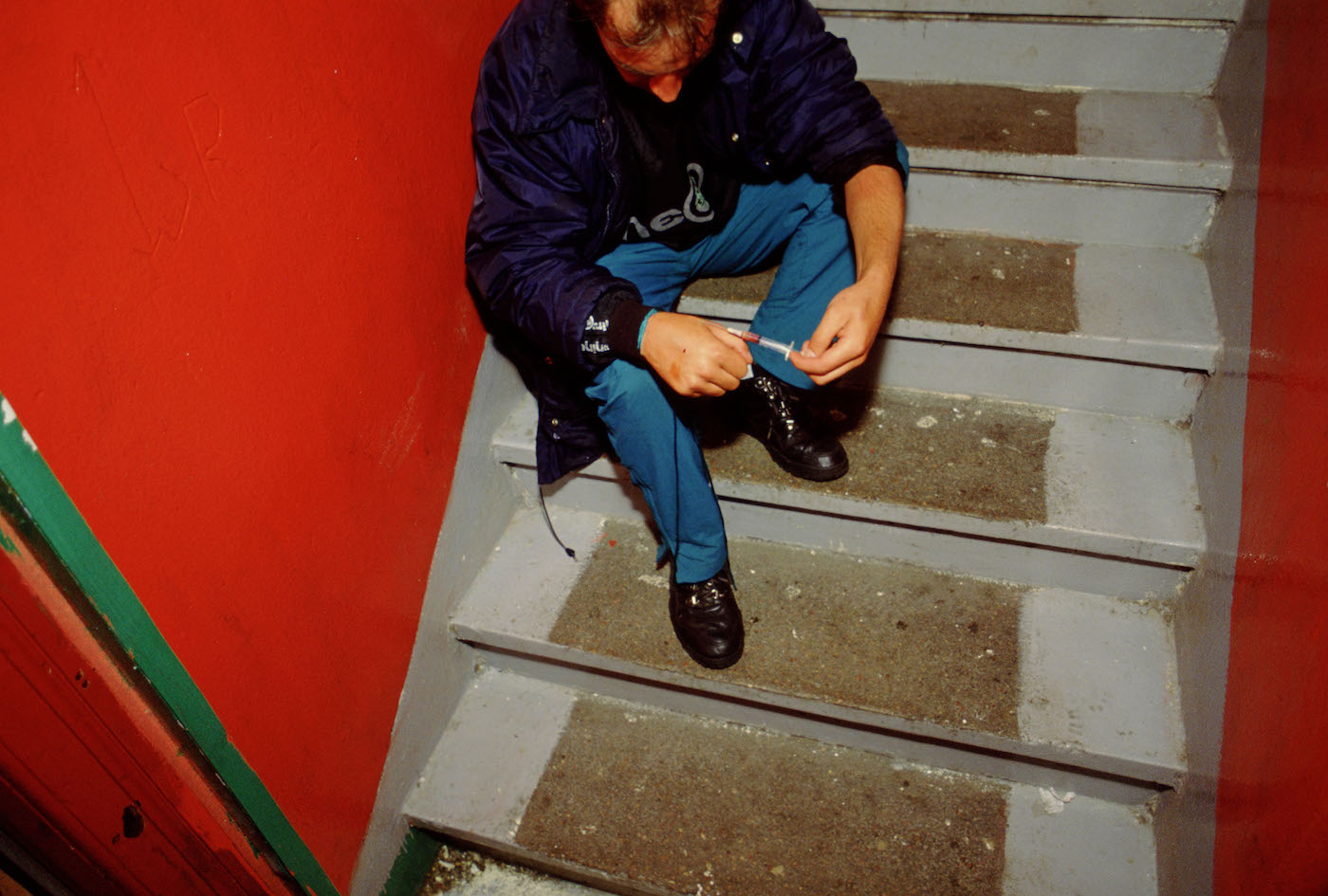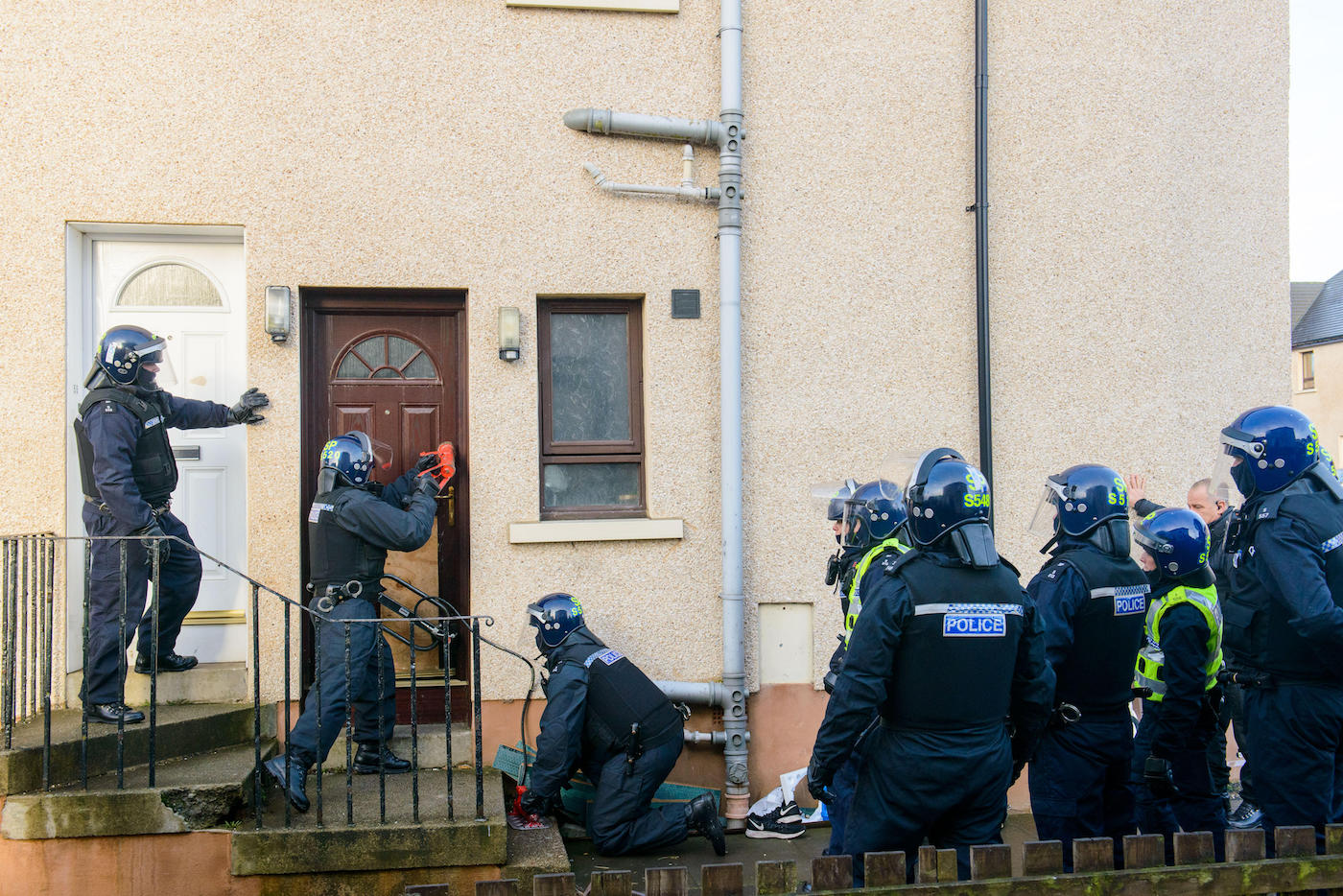I arrive in Dundee the same weekend as the opening of the V&A museum, the multi-million pound centrepiece to the city’s ambitious programme of arts-led regeneration. There’s a buzz in the air – museum fever or Fresher’s Week, it’s hard to say – but amid that buzz, there is a tragedy going on in this city.
Last year there were 934 drug-related deaths recorded in Scotland, the highest number since figures started being collated in 1996, and over double the amount recorded ten years ago. Of the many cities suffering high death tolls, it is Dundee on Scotland’s east coast that has attracted most attention, because statistically it has the highest per capita drug death rate in Europe.
Videos by VICE
In Dundee, authorities recorded 57 drug-related deaths last year – one every week, and up from 38 the previous year. Quite a toll for a city of just 148,000 people. Branded “Europe’s drug death capital”, the city has become the subject of doom-laden TV and newspaper stories about an underclass stalked by the spectres of addiction and overdose. But it’s not heroin or fentanyl worrying the city’s drug workers most; it’s the rise of a strong new tranquilliser that appears to be ruining, and cutting short, too many lives in Dundee.
Drug worker Danny Kelly apologies for the slight delay in meeting me. He’s been rushed off his feet the afternoon we meet at the Gowrie Care offices, where he works as team manager of the organisation’s drug harm reduction service. They operate an enhanced needle exchange site, largely aimed at the city’s heroin injecting population.
“When someone comes in through the door, they can expect a welcoming, non-judgmental approach,” Kelly tells me over a cup of tea. “We do more than just supplying people with a needle and telling them, ‘See you later.’” Of the 2,500 active injecting users they currently estimate for the city as a whole, around 1,200 have been through their doors.

Many of them don’t just use heroin, but also alcohol and benzodiazepines – a group of tranquillisers mainly prescribed by doctors for insomnia, anxiety and panic attacks, which are also sold on the black market. It is these tranquillisers that have become of great concern to drug workers such as Kelly, because they are becoming stronger and more deadly than the prescription diazepam (sometimes marketed as Valium) diverted onto the street before.
“What drug workers are now calling ‘street valium’ can be several times stronger than regular benzos like diazepam,” Kelly tells me. “Worse, the onset of its effects can take up to three hours. By comparison, diazepam tends to kick in around the 40-minute mark.”
This delayed gratification is where things can become fatal. “During that long wait, you might have some methadone and a wee drink as well. And you’ve already taken all these opiates that are central nervous system depressants, which are essentially telling your brain to stop breathing.”
So they go into overdose. “You can see it, literally. There’s what’s colloquially known as the ‘death rattle’, where it appears that the user is dosing off – a phenomenon not uncommon to those marooned on the streets of the city centre. The oesophagus closes, with oxygen starved and the opiates clinging tight to the opiate receptors in the brain.”
Of last year’s drug deaths, over half – 552 – were benzodiazepine-related, according to research by Dr Andrew McAuley at Glasgow Caledonian University. A decade ago, only one-sixth of drug deaths in Scotland were linked to benzodiazepines. In Dundee, those numbers are starker still; in 2015, one in five were related to benzos. In 2017, that figure jumped to one in two.
Dr McAuley offers a roll call of higher strength benzodiazepines that have arrived on Scotland’s street drug scene. Phenazepam, “which shot up, then that was controlled”; then Etizolam, “a really bad drug, much stronger, with a much shorter half-life”; and also Xanax, also popular with Gen-Z kids trying to cope with anxiety.
Etizolam is typical of the new wave, says McAuley. It is highly addictive, readily available online and up to ten times as potent as traditional diazepam. In 2017, it was implicated in 229 deaths in Scotland – one in every three of the total number of fatalities, usually combined with other substances, often methadone and alcohol.
After fears surrounding oversubscription a few years ago, access to diazepam in Scotland was cut. However, a rule of the drug trade is that once a substance is banned, supply is pushed into the unregulated street market and, inevitably, the drugs get stronger.
“People simply don’t know what they’re taking,” McAuley explains. “We’ve seen [from police seizures] that pills share the same, or similar, branding to diazepam tablets, something that’s pretty much ubiquitous across the country.”
Illicit market tranquillisers – known on the street as “blues”, because many still mimic the blue colour of the original patented Valium pills – have been a mainstay of Scotland’s street heroin-using scene since the 1980s. Diazepam is commonly taken by heroin users, alongside alcohol, to make it easier to ride-out opiate comedowns and withdrawal. But in recent years a clampdown on diazepam necessitated an influx of much stronger benzodiazepines arriving on the market.
Access to these drugs is ludicrously easy in Dundee. Most of the street drug users laugh when I ask them how hard it is to find these pills: “Don’t bother, mate,” is the gist, “they’ll come to you.”
“The dealers will come right to you in the middle of the day, in the centre of town, bold as you like,” one drug user told me. They’re cheap, too: Etizolam can be picked up for £1-a-tablet, often less if you buy a load on benefits day.
As with Spice (synthetic cannabis) in England and Wales, “street valium” has diffused from the online marketplace to the streets, via enterprising dealers, as well as from more traditional analogue supply lines. All any wannabe dealer needs is a broadband connection and some limited starter capital. Not much digging is required, with the Chinese-manufactured pills available to buy on Facebook and other easy-to-access marketplaces. Profits can be many times the initial outlay. Drug charity Addaction says the pills are arriving regularly in Dundee via van from Liverpool.
In an attempt to stamp out the easy supply of benzodiazepines and heroin on Dundee’s streets, police have launched a series of raids on drug stash houses in the city since July. They seized 18,000 benzodiazepines and over 12.5kg of heroin, with a combined street value of over £750,000.
Lewis Raitt, 18, was jailed for 22 months in September, after his home in the north of the city was raided and £10,000 worth of Etizolam discovered in November last year. The Sheriff passing sentence refused to mince his words, even if the defence pointed to their client’s evident immaturity: “Sooner or later… you are going to kill someone if you do not change your behaviour.”
However, as drug workers have acknowledged, these much trumpeted confiscation figures are almost certainly part of much larger batches that make their way undetected into the city, with the seizures a reminder of the scale of the problem, not the rapid fire cure.

There is another element to Dundee’s drug death problem, and it is Scotland’s problem too: not enough at-risk street drug users are actually getting treatment. Despite a reputation for outperforming England and Wales on public health, the proportion of drug users in treatment in Scotland is lower. Statistically, users in treatment are more likely to survive than those who aren’t. Worse, with austerity entrenching, there is little sign of this changing.
If you do want treatment in Dundee, there’s not much choice. Dundee remains the only city in Scotland without a single rehab centre, with NHS Tayside flat broke, having battled with parlous finances for years. And though the Scottish government has agreed to wipe its £45 million debt by 2019/20, it’s difficult to see how that crumb of good news is going to impact the average drug user in Dundee.
Heroin is still a problem in on Dundee’s streets, as it has been since the “Trainspotting Generation” – the long-term, typically male heroin users now aged 35 and above, locked into fictional immortality by Irvine Welsh. These days, purity is low in Dundee, making “street valium” an attractive top-up.
“It typically hovers at about 8 to 10 percent, though the price of a gram has dropped to around £25, whereas it was about £50 to £60 a few years ago. We’re really flooded with the stuff,” says Kelly.
The city’s drug scene doesn’t share the same cosmopolitanism as Edinburgh’s, just an hour-and-a-half away by train or car. Crack is seldom sighted, while the recent powder cocaine injecting phenomenon on the west coast also largely passed Dundee by.
After the spate of headlines about Dundee’s drug deaths this summer, it was announced that a Drugs Commission was to be set up to take a forensic look at deaths in the city, while also keeping an eye on the national context. Andy Perkins is the man in charge of facilitating their complex, labyrinthine work. “We were clear at the outset,” he tells me in his city centre office, “this is not just about Dundee, even though it gets a lot of the headlines.”
For Andy, the “drugs death capital” tag is misleading at best – a view echoed by others, including Dr McAuley – as European countries don’t keep data in the same way as the UK. “There’s different ways of presenting it,” he says. “So if you look at deaths-per-thousand of the whole population, then Dundee is in a bad state, but when you look at [the more relevant figure] of drug deaths-per-problem user, then it isn’t actually top of the pile [in the UK].”
Dundee may be skint, and the progress slow and unglamorous, but the fight to help drug users and stem the deaths continues.
Gowrie Care is at the forefront of a radical bid to eradicate Hepatitis C among its heroin-using clients by carrying out testing and providing medication. Critically, the city has increased access to naloxone, the opioid reversal drug. It might not be a panacea, or an alternative to treatment, but it saves lives, says Kelly.
Building relationships with his service users is a crucial part of keeping them alive, Danny stresses, in the absence of any formal drug treatment. And it’s trust that keeps people returning. “We work hard to get people to cut down on using drugs in the street, to cut down on drug-related litter, because we understand how that feeds into negative press portrayals of the city.”
I meet 24-year-old Jason* at a drop-in centre run by Eagles Wings Trust, a homelessness charity that runs a nightly mobile soup kitchen on the streets of Dundee, usually moored not far from Abertay University in the centre of town.
“You don’t even need to look [for drugs],” he tells me. “If you have an addictive personality, it’s so hard to keep away from it all. I was offered on Saturday, but I chose not to. For the last few days it’s been in my head.” I ask if he’d ever think about leaving Dundee. To where, exactly, he responds. His two sons are here, along with everyone he knows.
The rising number of heroin-related deaths in Scotland is already a massive concern. But it is being compounded by a lack of treatment provision and a seemingly endless supply of potent black market tranquillisers. If enforcement isn’t working – and the street drug and homeless charities helping those most at risk are working at maximum capacity – then the main aim of Dundee’s drug commission must be to ensure, at least, that life-saving treatment is there for those who need it.




